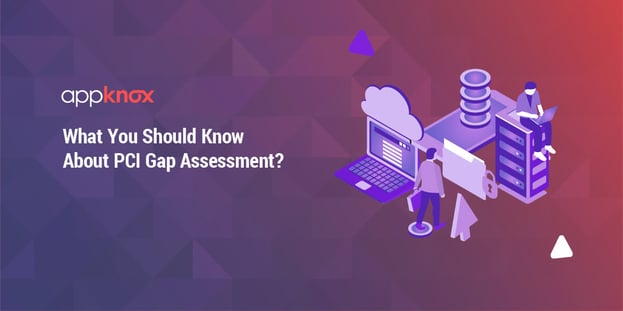
BLOG

BLOG
We know how complicated and resource-consuming it can be to comply with the standards set up by the PCI (Payment Card Industry) Security Standards Council. It’s not surprising that less than 1 in 5 businesses (around 18%) assess their PCI DSS controls more frequently than is required by the regulation. However, things become a lot easier and streamlined with PCI DSS gap assessment.
The PCI Gap Assessment or analysis not only highlights your current security posture but also the security expectations that need to be fulfilled by your organization. In this blog, we will try to answer how a PCI gap assessment works, the benefits and the steps involved. But before we move on to all of that, let’s first understand what PCI Gap Analysis actually means.
PCI Gap assessment or analysis is the analysis, identification and documentation of the regions of non-compliance of an organization with the standards set up by the Payment Card Industry Data Security Standard (PCI DSS). The gap analysis is usually the first step followed in the PCI compliance process. The gap assessment helps businesses and merchants understand where their compliance standard stands and prepares their security posture to achieve compliance.
PCI gap assessments are generally performed by security service providing companies whose security experts go on-site to inspect and prepare the businesses for an onsite assessment by PCI DSS officials themselves.
Good Read: What is SOC 2 and TSC along with Compliance and Certification
The basic purpose of a PCI gap analysis is to prepare your cybersecurity infrastructure and make it ready for an onsite PCI DSS audit. It is further utilized to fulfil the following purposes:
In order to comply with the PCI DSS standard, it is essential to first conduct a PCI gap analysis. It not only eases up the whole process but also helps merchants fill the gaps in their security posture before going forward for an onsite PCI audit. Here are some of the other benefits of a PCI gap analysis:
Once the assessment is complete, the experts provide a detailed report that highlights the key elements of the analysis and also explains the status of the security controls and a breakdown of further steps to be followed for remediation.
Good Read: What Businesses Need To Follow To Be Compliant With PCI DSS?
PCI DSS has set up a list of 12 key requirements that must be fulfilled by organizations that plan for PCI compliance. The gap analysis conducted by your organization must align with these 12 key requirements:
Appknox's engagement process during a PCI gap analysis focuses on understanding how ready your business is for its PCI audit and also the identification of any vulnerable controls which might impact PCI DSS compliance.
The engagement process usually involves our security experts meeting with your security teams who oversee PCI DSS compliance and also the teams involved in network administration and cardholder systems. The engagement process consists of the following key steps:
During the scoping exercise, our experts critically examine the security infrastructure and other system components and assess the scope required to fulfil the necessary PCI DSS standards.
In this step, we gather all the other information regarding the processes involved, people, and other system components to validate the scope identified for PCI compliance.
In the next step, we conduct an elaborate assessment of the overall process along with interviewing the business stakeholders, reviewing the policy documentation and a detailed analysis of the involved security controls.
In this step, we provide a detailed report on the whole assessment highlighting your compliance status and how you can improve your security posture by taking the necessary corrective actions.
Complying with standards like PCI DSS can be tedious and time taking. A PCI gap assessment, on the other hand, can make your compliance journey much easier and efficient. It provides directions to the right path to follow and helps businesses make informed decisions and streamline their process to become compliance-ready.
Appknox helps you stay on top of your PCI compliance gaps by proactively securing your PCI environment and helping you attain the much-coveted PCI DSS compliance with ease.
